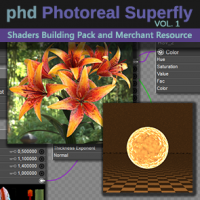Thanks for the quick response. That makes a lot more sense to me, which almost makes me think I'm starting to get the hang of the material room.
In the mean time, I decided to play around with something more complex, hair, and I found something that I just think is the coolest thing ever. You see I have this hair I was to use for a thief character I'm working on in a render. I hooked up the basic maps then started playing with some of the other settings to what would happen when working with hair.
(A couple quick notes on the renders, they are all done in SF with the very fast preview settings, so they are not baked enough by any stretch of the imagination. Secondly the only part I've changed so far is the center 'stripe' that is pulled back. Everything else is the original FF material the hair came with. On that note I should say this hair is designed so you can color the center front differently than the rest, which I've done here for my character. The main part of the hair is dark brown, and the front center stripe and whips are set to be black).
Anyway. . . Here's the hair when I'd done nothing but plug in the image maps. In this I was using the default roughness of .1
Not bad at all, the center is starting to look pretty good, definitely better that the unconverted parts. Then I set the roughness to .3
And OMG! I can't tell you how happy that makes me. The hair isn't supper glossy like my character brushes her hair 100 times every day both before and after she goes to bed. Like I said, this is supposed to be a their character, I want her to be a little rough, but her hair pulled out of her face, hence this choice in hair.
Finally, I set the roughness up to .5
So I haven't decided, but this might be further than I want to go. But this excites me so much. I've never known how to get rid of the super glossy supermodel shine that most hairs have. It's great for some characters, but not others. Not to mention the hair is just looking way better in SF to begin with, looks much more like plastic on the parts I haven't gotten to yet.
Anyway, my point is I'm super excited, that I now have new ways to adjust these materials for my characters.





